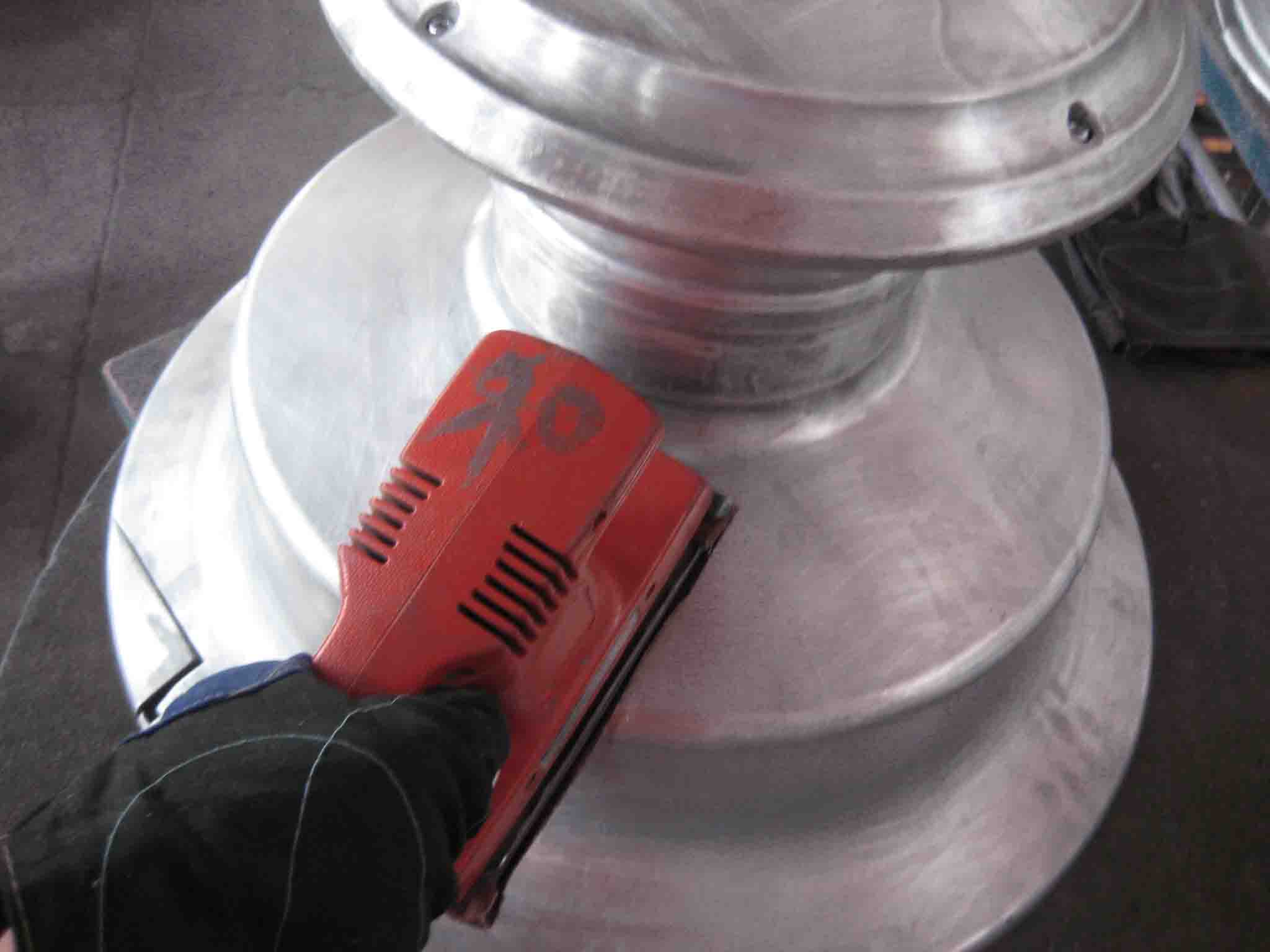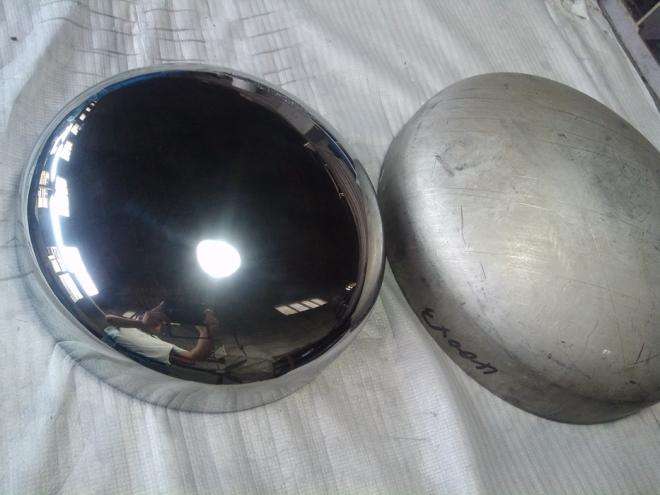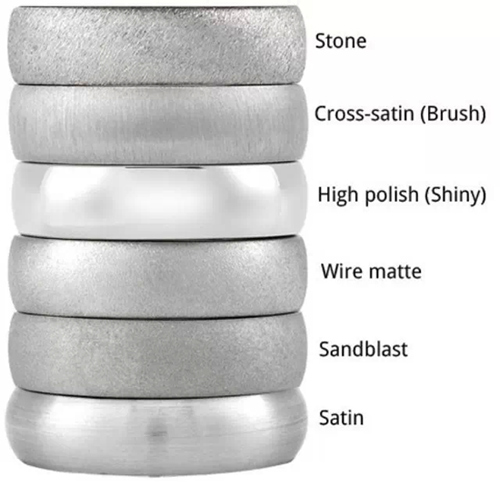Metal polishing industrial methods of metal surface final polishing
Polishing is applied to improve products' appearance and to make them more consumer demanded. Such processing adds decorative brightness to products and is also used to prepare surface for galvanic coating. There are several industrial methods of metal surface polishing:
Мechanical
Chemical
Electrochemical
Electrolyte-plasma
Disadvantages of traditional metal polishing types
The first three methods of metal surface processing listed above have limitations of use. There is a number of enterprises where the automation of mechanical, chemical and electrochemical methods is impossible for processing large mass production lots.
Difficulties in using traditional types of metal polishing are conditioned by both economic and technological reasons. Economic difficulties are associated with high cost of production robots and machines with numerical control. And technological difficulties in using traditional forms of final metal polishing are related to the complexity of full manufacturing process automation. Forced using of manual labour at the stage of polishing products, surface activation or its cleaning impede the establishing of industrial automation lines' uninterrupted operation. Often due to the use of outdated methods of metal processing a production line takes the form of conveyor, which significantly increases the cost of production and adversely affects the product competitiveness.
Comparison of technologies
| Mechanical polishing | Chemical polishing | Electrochemical polishing | Electrolyte-plasma polishing | |
| Productivity | Average | Low | Average | High |
| Restrictions on geometry | Simple Profile | Complex profile | Complex profile | Complex profile |
| Material change | Exposure to implementation of accidental particles | Unevenness of treatment, etching | Poor handling of flat surfaces | Hardening of the material |
| Processing complexity | Average | Average | High | Average |
| Automation capabilities | None | None | Present | Present |
| Material cost | High | High | High | Low |
| Amortization period, years | 25 | 5 | 20 | 25 |
| Occupied manufacturing area | Small | Medium | Medium | Medium |
| Ecological level | Low | Low | Low | High |
| Flammability risk | Low | High | Medium | Low |
| Energy consumption | Medium | Low | High | High |
| Qualification level of workers | High | Medium | Medium | Medium |
Widespread introduction in industry of more productive electrolyte-plasma polishing (EPP) will eventually replace almost everywhere toxic electrochemical processing method. As compared with other methods, EPP is low cost method and characterized by high performance, efficiency and quality of operations performed.
Electrolyte-plasma method is environmentally clean and satisfies sanitary standards for cleaning of spent electrolyte without special treatment facilities.
Metal surface polishing by combining various processing methods
Often products subjected to polishing have an unprocessed rough surface. As a result electrolytic-plasma processing becomes time and power consuming and a significant layer of metal is removed.
Furthermore, during processing rough ramified surfaces, the current density at the first processing stage is sometimes twice higher than at the final stage. This is conditioned by the fact that the initial surface contact area is apparently twice bigger than that one after processing.
In practice, it is better to perform polishing products in two stages: surface cleaning and defatting at the first stage and direct polishing at the second stage. Cleaning parts before polishing is required because by the casting of metal products or by their heat treatment in high temperature range, when metal oxidation occurs even in neutral environments, the surface can not completely avoid contact with an oxidizing environment (e.g. air). In order to clean surface before polishing, the following surface processing types are applied:
barrel grinding
underwater grinding
hydroabrasive treatment
iron sanding
processing with emery powder
ultrasonic processing
chemical and electric etching
Metal surface treatment after flame cutting
Smoothing rough surface by such popular type of plasma processing as flame cutting is not necessarily carried out by cutting the protuberances. Pretreatment can be performed by plastic deformation of surface layer. In some cases the mechanical surface treatment with pastes consist not in cutting protuberances, but in their mashing. Such pastes consist of special lubricating, chemically active, surfactant species softening the surface, and of fine oxide particles, such as inert chromium oxide.
Electrolyte-plasma polishing of metals with prefinishing
In order to save energy, it is advisable to use the technology of electrolyte-plasma polishing in two stages, when at the first stage the smoothing of the rough surface geometry by using various energy-saving methods takes place, and then at the second stage short-time final electrolyte-plasma polishing is applied.
For example, by polishing parts from stainless ductile steel, at the first stage the following surface treatments may be included:
underwater grinding with waterproof sandpaper with particle size in 50–80 microns
treatment with course wire brush
electric melting in 10% oxalic acid solution at the voltage of 12V for 5-10 minutes with current density of 2A/cm2.
sand blasting with cast-iron grit
bleach etching in solution of 25% sulphuric acid and 20% hydrochloric acid with volume ratio of 3/1 at a temperature of 30-40°C. during 3–5–10 minutes.
The subsequent electrolyte-plasma polishing may be carried out in a 5% aqueous solution of ammonium sulphate at a temperature of °C.
Methods of metal processing before electrolyte-plasma polishing
Methods of metal processing by scraping bright
While the original sample, after being pretreated with rough sandpaper with particle size in 500 microns, is polished to a mirror finish during 5-6 minutes with the removal of a 0.05 mm metal layer, the samples, processed to matt state with a sandpaper with particle size in 50-80 microns, are polished two times faster during less than 3 minutes, and at the same time only 0,02–0,03 mm metal layer is removed. Energy saving by prior surface processing with sandpaper makes up about 40%.
Processing metals by scratch-brushing
Pretreatment of roughly ground or tooled surface with metal brushes is also very effective. Apparently,by this type of processing a surface geometry is smoothed at the expense of plastic deformation of a metal, and partly at the expense of scratch-brushing, i.e. metal rubbing or scratching. An oxide film is also removed, which in turn impedes the uniform polishing of a product in those cases where the product is manufactured by welding or is subjected to high-heat treatment.
Processing metals by etching
Chemical etching also shows good results, especially in processing of the samples that were heat treated: there formed a scale on a steel surface, which is hard removed by electrolyte-plasma treatment during 15 minutes or more. Etching of these samples in solutions of sulphuric and hydrochloric acid creates a rough, descaled surface without defects. Subsequent treatment of the samples in the ammonium sulfate at a voltage of 260 V during 4 minutes allows to obtain a glossy surface.
Product Pictures
 |  |  |